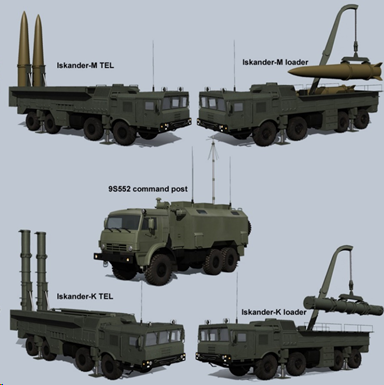

Context
Russia is planning to send nuclear capable short-range missile systems to its ally Belarus in the coming months.
About
Iskander-M system:
- The Iskander-M is a mobile guided missile system code-named "SS-26 Stone" by NATO, which replaced the Soviet "Scud."
- Russia defines Iskander-M System as both the transporter-erector launch system and the short-range ballistic missile (SRBM) it fires.
- The system can also fire ground-launched cruise missiles (GLCMs) – the SSC-7 and the SSC-8.
- The Iskander-M system has been exclusively used by the Russian military, whereas Iskander-E is the one meant for export.
- The Iskander missiles are designed to confuse missile defences by flying on a low trajectory and manoeuvring in flight to strike targets within 2 to 5 metres accuracy.
Missile’s capability and range:
- Range: The Iskander-M missile has a range of 500 km and it can carry a payload of up to 700 kg.
- Weapon: It is capable of carrying both conventional and nuclear warheads.
- The conventional warheads can be equipped with include cluster bombs, electromagnetic pulse (EMP) warheads and bunker-buster munitions.
- The export variant, Iskander-E, has a range of 280 km with a reduced 480 kg payload.
Introduction and usage:
- Iskander system was inducted by Russia in 2006.
- Its development picked pace in the late 1980s after the “Oka” SRBM or the OTR-23 was banned under the Intermediate Nuclear Forces Treaty.
- The Oka was Russia’s first attempt to replace the Soviet Scud missiles.
- Iskander was the second.
- Russia first used the Iskander in combat in Georgia in 2008.

Warning to the west:
- Russia has used the Iskander system to project power against Europe, more so because of its ability to be fitted with tactical nuclear warheads.
- In 2012, Moscow said that the weapon could be used to target Europe’s missile defences.
- The Iskander system has already been deployed in Kaliningrad, a Russian exclave, from where it can be fired to target NATO forces in Poland, the Baltic States, and Sweden.

